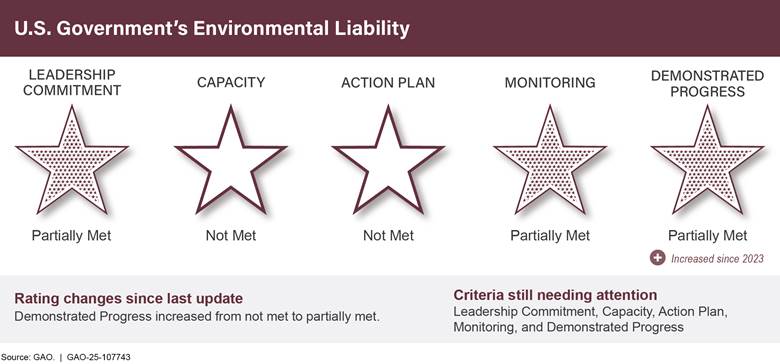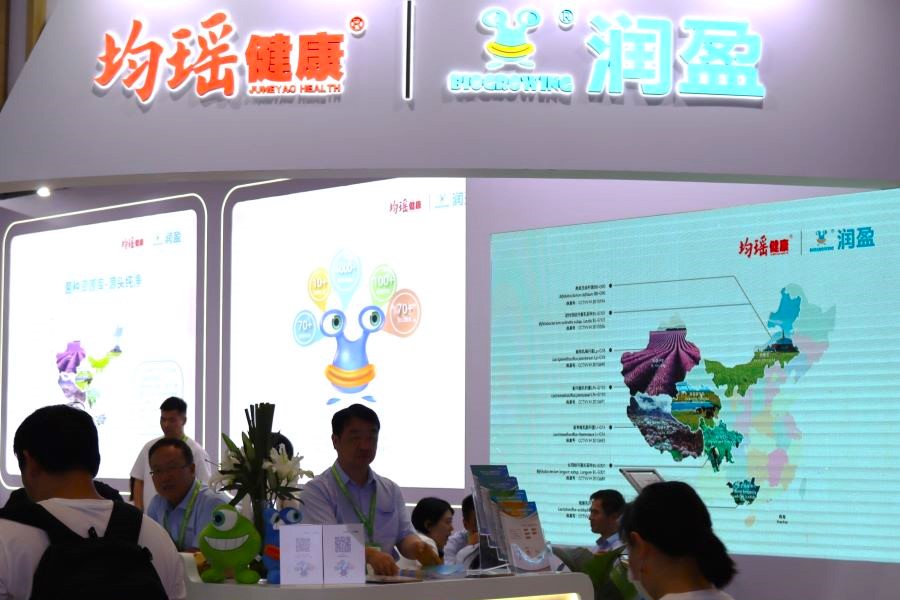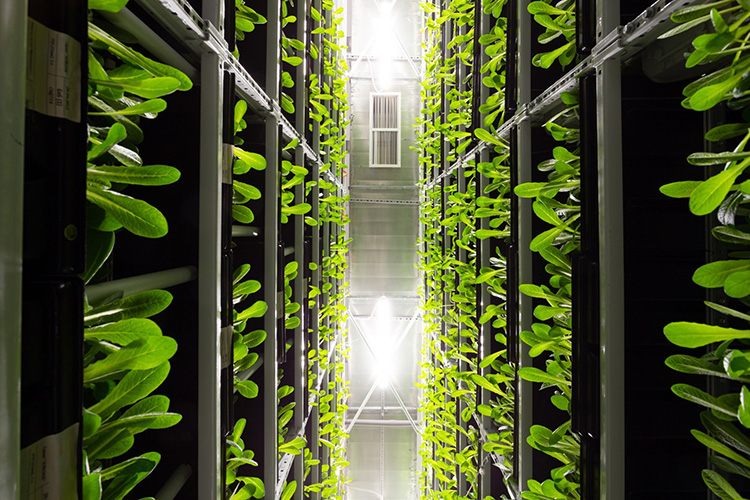Report on the Impact of Labor Shortages on Oregon’s Agricultural Sector and Sustainable Development Goals
Executive Summary
A significant labor shortage, primarily driven by the “chilling effect” of immigration enforcement policies, is causing substantial economic and food losses in Oregon’s agricultural sector. This crisis directly undermines several United Nations Sustainable Development Goals (SDGs), including those related to poverty, hunger, decent work, economic growth, and responsible production. This report analyzes the multifaceted impacts of this situation, drawing on the case of cherry and berry farms in The Dalles, Oregon, and highlights the urgent need for institutional reforms to create sustainable and equitable systems for food production and labor.
Agricultural Production, Food Waste, and Economic Stability
The Scale of the Agricultural Loss
Farmers in Oregon are experiencing critical labor shortages, leading to a significant portion of their crops being left unharvested. At CE Farm Management in Wasco County, farmer Ian Chandler reports that nearly a quarter of his 125 acres of cherry trees were not picked. This has resulted in a direct financial loss estimated between $250,000 and $300,000 for his operation alone, with similar situations reported on neighboring farms.
Implications for SDG 2 (Zero Hunger) and SDG 12 (Responsible Consumption and Production)
The failure to harvest crops represents a critical breakdown in the food supply chain, directly contravening key SDG targets.
- Food Loss and Waste: The unpicked, rotting fruit is a stark example of food loss at the production stage, working against SDG Target 12.3, which aims to halve per capita global food waste by 2030.
- Food Security: While the immediate impact is on farm revenue, systemic failures in harvesting threaten the stability and resilience of local and national food supplies, a core component of SDG 2.
- Sustainable Production: The resources invested in growing the crops—water, land, and energy—are wasted, undermining the principles of sustainable production patterns.
The Human Dimension: Labor Rights, Inequality, and Well-being
Workforce Demographics and Vulnerabilities
The agricultural workforce in the region is predominantly composed of Latino migrant workers, many of whom are part of mixed-status families or are undocumented. According to the US Department of Agriculture, an estimated 42% of hired crop farmworkers nationally are undocumented. The current climate of intensified immigration enforcement has deterred many of these essential workers from traveling for seasonal harvests, fearing detention or deportation for themselves or their family members.
Challenges to SDG 1 (No Poverty), SDG 8 (Decent Work), and SDG 10 (Reduced Inequalities)
The labor crisis highlights severe challenges to ensuring economic security and fair treatment for a vital segment of the workforce.
- Erosion of Decent Work (SDG 8): The fear-driven labor shortage underscores the precarious and insecure working conditions for migrant laborers. This situation is contrary to SDG Target 8.8, which calls for protecting labor rights and promoting safe and secure working environments for all workers, especially migrant workers.
- Increased Poverty and Inequality (SDG 1 & SDG 10): The loss of seasonal income is a direct blow to the livelihoods of worker families, potentially pushing them further into poverty. Furthermore, the situation exposes a deep-seated inequality where workers contribute taxes, including to Medicare and Social Security, without the ability to access these benefits or receive legal protection, a direct challenge to SDG 10’s goal of reducing inequalities.
- Hindrance to Economic Growth (SDG 8): The crisis impacts more than just individual farms and workers. As stated by farmer Ian Chandler, “If the base of agriculture struggles, everything else is going to struggle as well.” This ripple effect threatens the economic prosperity of the entire community, impacting interconnected industries and undermining local economic growth (SDG 11).
Impact on SDG 3 (Good Health and Well-being)
The fear and instability have tangible consequences for the health and well-being of workers and their families. A seasonal worker, “Lisa,” chose not to travel to Oregon to protect her undocumented parents. This decision has had several negative health impacts:
- Mental Health: The constant fear of separation and deportation creates significant stress and anxiety.
- Physical Health: To avoid detection, Lisa’s family remains indoors, which she states has exacerbated her children’s health conditions, including asthma and a vitamin D deficiency. This directly impacts the achievement of well-being for all ages as outlined in SDG 3.
Institutional Responsibility and the Path Forward
The Need for Institutional Reform (SDG 16)
The crisis is fundamentally a result of institutional and policy failures. Farmers and workers alike point to the need for comprehensive immigration reform to create stable, legal, and just systems. This aligns with SDG 16 (Peace, Justice, and Strong Institutions), which emphasizes the need for effective, accountable, and inclusive institutions.
Stakeholder Perspectives on a Sustainable Solution
- Farmers: Farmers like Ian Chandler and Katie Bolton emphasize their reliance on this skilled workforce and express support for their employees. They advocate for a legal framework that recognizes the vital role these workers play in the nation’s economy and food security.
- Workers: Workers and their families express a desire for respect and recognition for their hard work, especially their role as essential workers during the COVID-19 pandemic. They seek a system that allows them to work without fear and contribute to the economy safely.
In conclusion, addressing the labor shortage in Oregon’s farms requires more than a temporary fix; it necessitates a comprehensive policy overhaul. Achieving a sustainable future for American agriculture is inextricably linked to upholding the dignity and rights of its workforce, thereby making progress on a wide range of interconnected Sustainable Development Goals.
1. Which SDGs are addressed or connected to the issues highlighted in the article?
SDG 2: Zero Hunger
- The article directly addresses food loss and its impact on the food supply chain. The core issue is that cherries are “rotting on the trees” not due to blight or weather, but a lack of labor to harvest them. This connects to ensuring sustainable food production and reducing food losses.
SDG 8: Decent Work and Economic Growth
- This goal is central to the article. It explores the economic consequences of labor shortages on farm owners, who face significant revenue loss (“$250,000-$300,000 of revenue”). It also highlights the precarious situation of migrant workers, their working conditions, lost income, and the fear that prevents them from seeking employment. The discussion on immigration policy, labor rights, and the need for a stable workforce for economic prosperity are all key elements of SDG 8.
SDG 10: Reduced Inequalities
- The article focuses on the vulnerabilities of a specific group: immigrant laborers, particularly those who are undocumented or part of mixed-status families. The “chilling effect” of immigration enforcement creates fear and restricts their mobility and ability to work, highlighting an inequality of outcome based on origin and legal status. The call for “comprehensive immigration reform” is a call to create more equitable policies.
SDG 12: Responsible Consumption and Production
- The article provides a clear example of post-harvest food loss, a key concern of SDG 12. The “mummified” cherries that were never picked represent a failure in the production chain, leading to significant food waste before the product can even reach consumers.
SDG 16: Peace, Justice and Strong Institutions
- The article implicitly addresses this goal by highlighting the consequences of current immigration policies and the lack of a functional, comprehensive legal framework. The farmer’s statement that “As an industry, we need it. As a country, we need it” regarding “comprehensive immigration reform” points to the need for effective and just institutions to manage migration and labor.
2. What specific targets under those SDGs can be identified based on the article’s content?
SDG 2: Zero Hunger
- Target 2.3: By 2030, double the agricultural productivity and incomes of small-scale food producers… The article shows a failure to meet this target, as the farmer, Ian Chandler, is losing a significant portion of his income (“$250,000-$300,000 of revenue”) due to the labor shortage, directly impacting his farm’s productivity and financial stability.
- Target 2.4: By 2030, ensure sustainable food production systems and implement resilient agricultural practices… The labor shortage threatens the sustainability of the cherry farming operation. The farmer’s preference for hand-picking to avoid damaging next year’s crop buds is a resilient practice, but it is rendered ineffective without the necessary labor.
SDG 8: Decent Work and Economic Growth
- Target 8.5: By 2030, achieve full and productive employment and decent work for all… The article shows how a segment of the workforce is unable to achieve productive employment due to fear of deportation. The work is available, but the environment is not “decent” or secure enough for them to participate.
- Target 8.8: Protect labour rights and promote safe and secure working environments for all workers, including migrant workers… and those in precarious employment. The core issue described is the lack of a secure working environment for migrant workers. The “strong immigration enforcement” and raids create an atmosphere of fear that directly undermines their safety and security, preventing them from traveling for work.
SDG 10: Reduced Inequalities
- Target 10.3: Ensure equal opportunity and reduce inequalities of outcome, including by eliminating discriminatory laws, policies and practices… The article describes how current immigration enforcement policies lead to an inequality of outcome, where migrant workers and their families are afraid to travel and work, losing income and opportunity.
- Target 10.7: Facilitate orderly, safe, regular and responsible migration and mobility of people, including through the implementation of planned and well-managed migration policies. The article is a case study of the consequences of not having such policies. The “chilling effect” on worker mobility is a direct result of a lack of “orderly, safe, and regular” processes for migrant agricultural workers.
SDG 12: Responsible Consumption and Production
- Target 12.3: By 2030, halve per capita global food waste at the retail and consumer levels and reduce food losses along production and supply chains, including post-harvest losses. The article directly describes significant post-harvest loss, with cherries “rotting on the trees” because there was “no one to pick the fruit.” This is a direct failure to reduce food loss at the production stage.
3. Are there any indicators mentioned or implied in the article that can be used to measure progress towards the identified targets?
Indicators for SDG 2 and SDG 12
- Food Loss Quantity: The article states that the lost harvest “has hit almost a quarter of Chandler’s 125 acres of cherry trees.” This provides a measurable area of land where production was lost.
- Monetary Value of Food Loss: The farmer estimates he will “lose $250,000-$300,000 of revenue, left to rot on the trees.” This provides a clear financial indicator of the scale of the food loss.
Indicators for SDG 8
- Labor Force Participation: The article mentions that “half of them [the loyal seasonal workforce] did not arrive” this year. This 50% drop is a direct indicator of reduced labor participation.
- National Labor Statistics: The article cites that “1.4 million people have dropped out of the US labor force — 802,000 of whom were foreign-born,” providing a broader statistical context for the labor shortage.
- Worker Demographics: The US Department of Agriculture estimate that “42% of hired crop farmworkers are undocumented immigrants” serves as an indicator of the workforce’s composition and vulnerability.
- Wages and Deductions: The article provides specific wage data (“about $5 for each bucket of blueberries picked”) and tax information (“about $150 was automatically deducted from her paycheck of some $900”), which can be used to analyze worker income and contributions.
Indicators for SDG 10
- Impact of Policy on Mobility: The “chilling effect on people wanting to move” due to immigration enforcement is a qualitative indicator of how policy impacts the mobility and opportunities of a specific population group.
- Prevalence of Mixed-Status Families: The story of Lisa, who has DACA status while her parents are undocumented, illustrates the challenges faced by mixed-status families and serves as an anecdotal indicator of this complex social issue.
4. Table of SDGs, Targets, and Indicators
| SDGs | Targets | Indicators Identified in the Article |
|---|---|---|
| SDG 2: Zero Hunger | 2.3: Double agricultural productivity and incomes of small-scale food producers.
2.4: Ensure sustainable food production systems. |
– Loss of $250,000-$300,000 in revenue for the farmer. – Inability to harvest crops threatens the sustainability of the farm. |
| SDG 8: Decent Work and Economic Growth | 8.5: Achieve full and productive employment and decent work for all.
8.8: Protect labour rights and promote safe and secure working environments for all workers, including migrant workers. |
– 50% of the seasonal workforce did not arrive. – 802,000 foreign-born people dropped out of the US labor force since April. – Workers’ fear of deportation creates an insecure working environment. |
| SDG 10: Reduced Inequalities | 10.3: Ensure equal opportunity and reduce inequalities of outcome.
10.7: Facilitate orderly, safe, regular and responsible migration and mobility of people. |
– “Chilling effect” of immigration enforcement on worker mobility. – Workers and families staying home “to be safe,” forgoing income due to their legal status or that of family members. |
| SDG 12: Responsible Consumption and Production | 12.3: Halve per capita global food waste… and reduce food losses along production and supply chains, including post-harvest losses. | – Cherries “rotting on the trees.” – Lost harvest on nearly a quarter of 125 acres of cherry trees. |
| SDG 16: Peace, Justice and Strong Institutions | 16.6: Develop effective, accountable and transparent institutions at all levels. (Implied) | – The call for “comprehensive immigration reform” highlights the need for a more effective legal framework for migrant labor. |
Source: cnn.com







